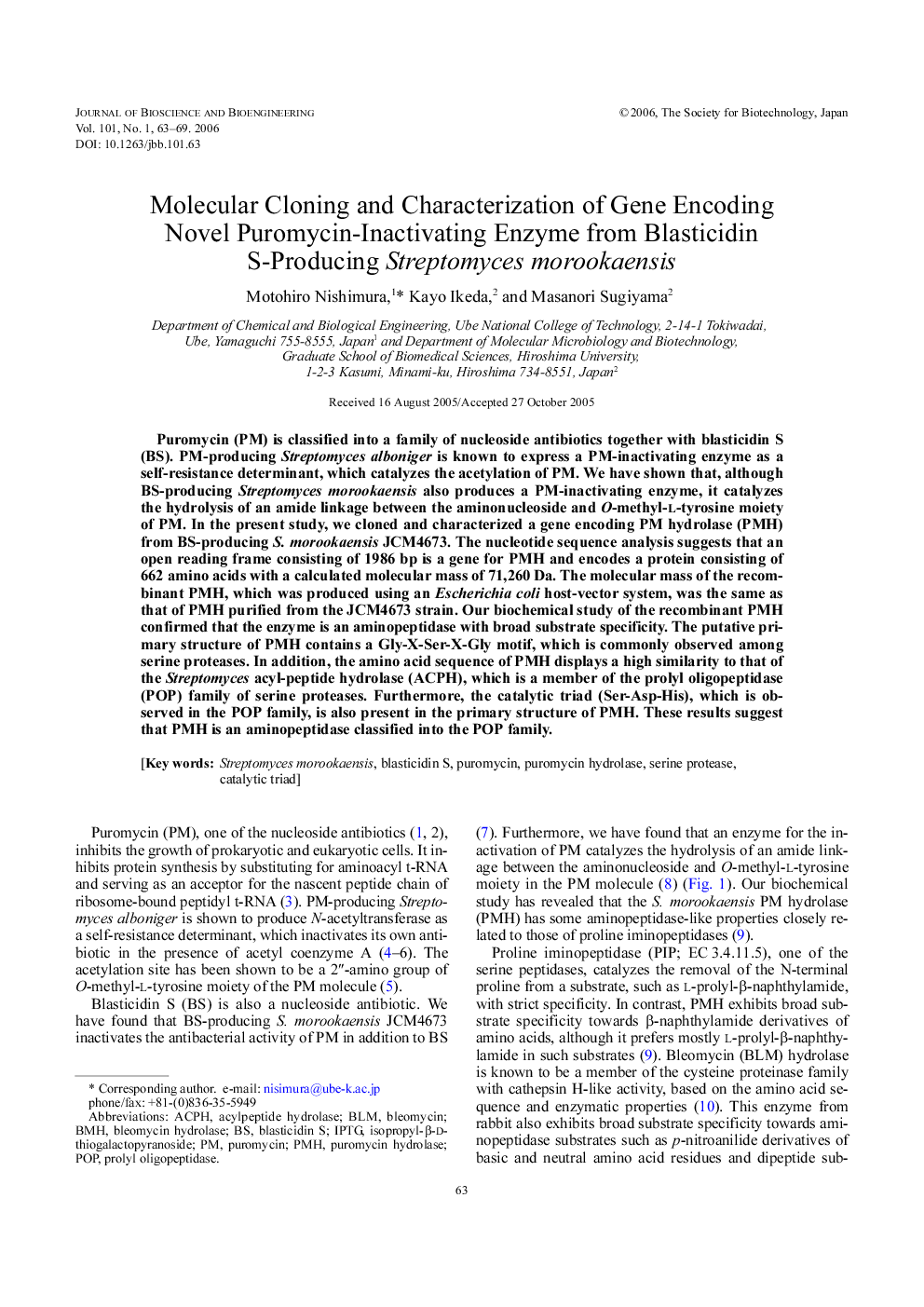| Article ID | Journal | Published Year | Pages | File Type |
|---|---|---|---|---|
| 22243 | Journal of Bioscience and Bioengineering | 2006 | 7 Pages |
Puromycin (PM) is classified into a family of nucleoside antibiotics together with blasticidin S (BS). PM-producing Streptomyces alboniger is known to express a PM-inactivating enzyme as a self-resistance determinant, which catalyzes the acetylation of PM. We have shown that, although BS-producing Streptomyces morookaensis also produces a PM-inactivating enzyme, it catalyzes the hydrolysis of an amide linkage between the aminonucleoside and O-methyl-L-tyrosine moiety of PM. In the present study, we cloned and characterized a gene encoding PM hydrolase (PMH) from BS-producing S. morookaensis JCM4673. The nucleotide sequence analysis suggests that an open reading frame consisting of 1986 bp is a gene for PMH and encodes a protein consisting of 662 amino acids with a calculated molecular mass of 71,260 Da. The molecular mass of the recombinant PMH, which was produced using an Escherichia coli host-vector system, was the same as that of PMH purified from the JCM4673 strain. Our biochemical study of the recombinant PMH confirmed that the enzyme is an aminopeptidase with broad substrate specificity. The putative primary structure of PMH contains a Gly-X-Ser-X-Gly motif, which is commonly observed among serine proteases. In addition, the amino acid sequence of PMH displays a high similarity to that of the Streptomyces acyl-peptide hydrolase (ACPH), which is a member of the prolyl oligopeptidase (POP) family of serine proteases. Furthermore, the catalytic triad (Ser-Asp-His), which is observed in the POP family, is also present in the primary structure of PMH. These results suggest that PMH is an aminopeptidase classified into the POP family.
